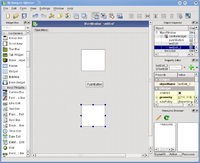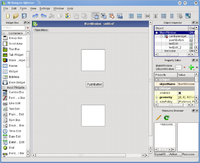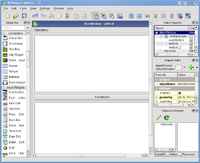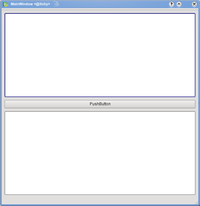Development/Tutorials/Using Qt Creator: Difference between revisions
| Line 64: | Line 64: | ||
== Run cmake == | == Run cmake == | ||
* Enter arguments for cmake like | * Enter arguments for cmake like | ||
/root/kdepim -DCMAKE_INSTALL_PREFIX=/usr/local -DLIB_SUFFIX=64 -DCMAKE_BUILD_TYPE=debugfull | ''/root/kdepim'' -DCMAKE_INSTALL_PREFIX=/usr/local -DLIB_SUFFIX=64 -DCMAKE_BUILD_TYPE=debugfull | ||
DLIB_SUFFIX=64 means that you want to install your libraries into directories named lib64. /root/kdepim is where your source code is. | DLIB_SUFFIX=64 means that you want to install your libraries into directories named '''lib64''',not '''lib'''. ''/root/kdepim'' is where your source code is. | ||
* click "Run cmake" | * click "Run cmake" | ||
* Note a .cbp file gets created containing many information about the build. | * Note a .cbp file gets created containing many information about the build. | ||
Revision as of 11:05, 1 August 2010
Development/Tutorials/Using Qt Creator
Languages: عربي | Asturianu | Català | Česky | Kaszëbsczi | Dansk | Deutsch | English | Esperanto | Español | Eesti | فارسی | Suomi | Français | Galego | Italiano | 日本語 | 한국어 | Norwegian | Polski | Português Brasileiro | Română | Русский | Svenska | Slovenčina | Slovenščina | српски | Türkçe | Tiếng Việt | Українська | 简体中文 | 繁體中文
QtCreator is an IDE from Nokia for Qt. It contains QtDesigner for UI design. This article describes:
- how to create a new program
- how to load an existing program
Creating a new program
Qt Designer is a graphical program which allows you to easily build user interfaces, using a drag n drop interface. Here is a short example how it can go, for more information read the user documentation.
- Step 0
Call Qt Designer from within the QtCreator IDE:
qtcreator
- Step 1
Add the widgets you want by drag-and-drop
- Step 2
Select the mainwindow. This is the one un-intuitive step. To lay out the objects in the mainwindow, you do not select the objects in the mainwindow, but the mainwindow itself.
- Step 3
Select Form -> Lay Out in a Grid
- Result
You get a decent look, and if you resize the window, the widgets resize as well.
Using KDE libraries
To use KDE classes like KMessageBox, you need to tell qtcreator to use the KDE libraries when building. Go to your home directory, cd into yourproject and modify yourproject.pro. Add a line
LIBS += -lkdeui
Then you can start using KDE classes in your code.
Adding a toolbar
To add a toolbar, right-click on the UI and choose "Add Toolbar". Then you can set icons and text in your mainwindow's constructor with code like this:
ui->toolBar->addAction(QIcon("/usr/share/icons/oxygen/22x22/apps/ktip.png"),"hello world");
Load an existing project
This describes how to use QtCreator to integrate existing KDE 4 applications. It has been tested with QtCreator 1.2.80 and SUSE Linux 11.1 but should work same or similar with every combination. As an example KDE application we use ktimetracker from the kdepim module, other applications should work analog.
You can either work with code on your disk or have QtCreator do the subversion checkout.
use code from your disk
- Import the CMakeLists.txt file
File -> Open -> kdepim/CMakeLists.txt.
- As build directory choose kdepim.
- You will automatically come to a screen where you can run cmake
have QtCreator do the subversion checkout
- Choose File -> New File or Project -> Version Control -> Subversion Checkout.
- Enter a subversion URL like svn://anonsvn.kde.org/home/kde/trunk/KDE/kdepim
- Enter a checkout directory, so the local directory where the checkout will be loaded in
- Type finish, see how the checkout starts
- You will automatically come to a screen where you can run cmake
Run cmake
- Enter arguments for cmake like
/root/kdepim -DCMAKE_INSTALL_PREFIX=/usr/local -DLIB_SUFFIX=64 -DCMAKE_BUILD_TYPE=debugfull
DLIB_SUFFIX=64 means that you want to install your libraries into directories named lib64,not lib. /root/kdepim is where your source code is.
- click "Run cmake"
- Note a .cbp file gets created containing many information about the build.
- click "Finish"
Build it
- Configure qtcreator to build only ktimetracker:
Projects -> Active run configuration=ktimetracker -> build settings -> build steps -> make -> show details -> activate ktimetracker.




